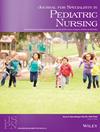Experiences of adolescents affected by earthquakes: A qualitative study
Abstract
Purpose
The aim of the study is to explore the experiences of adolescents affected by the earthquake.
Design and Methods
This study was carried out in a descriptive phenomenological design, which is a qualitative research method. This research was conducted as a qualitative investigation utilizing a phenomenological approach to explore the experiences of 12 adolescents through the purposeful snowball sampling method. The interviews were conducted with adolescents who affected by the Kahramanmaraş earthquakes in a city located in the west of the country, between March 18, 2023 and June 30, 2023. Semistructured interviews were employed, and the data underwent inductive content analysis. COREQ reporting guidelines were used.
Results
The participants in this study vividly recounted experiencing intense fear and panic during the earthquake. Subsequent challenges emerged from the lack of coordination in aid efforts, struggles to secure shelter and necessities, and the profound loss of relatives. These adversities posed considerable physical and psychological challenges. Notably, the adolescents' ability to reflect on their past lives and reshape their perspectives proved instrumental in facilitating their adaptation to a new life. However, witnessing the demise of loved ones, grappling with the fear of death and loss, and incessantly discussing the earthquake hindered their adjustment.
Practice Implications
We found that adolescents experienced the quakes in three phases: in the moment, postquake, and adaptation to new life. The first theme underscores the limitations of current effectiveness of quake training. This finding has important implications for policy to better prepare the adolescent population for quake disasters. The second theme reveals that the communication and coordination problems experienced after the earthquake enable the weaknesses of the system to be noticed and political steps should be taken in this direction. The third theme focuses on the factors that increase or decrease the psychosocial adaptation of adolescents who have experienced this traumatic experience to the new life. This provides important clues to improve and support adolescent health.

 求助内容:
求助内容: 应助结果提醒方式:
应助结果提醒方式:


